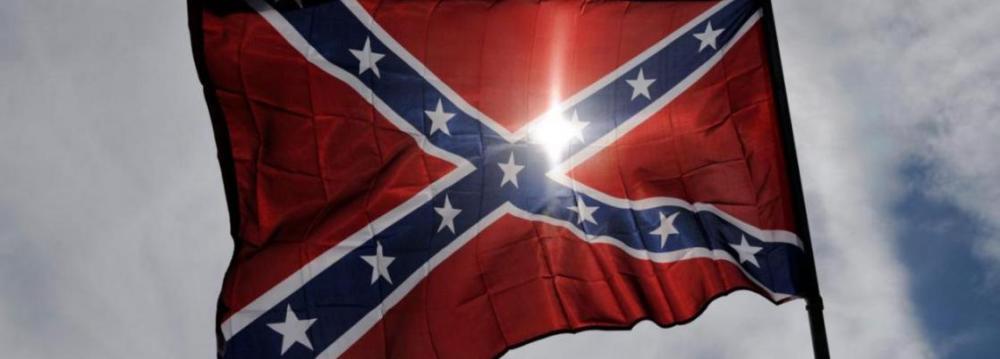Last week’s tragic shooting at Mother Emanuel African Methodist Episcopal Church in Charleston, South Carolina, that killed nine black parishioners gathered for a Bible study has renewed the debate over one of the most controversial southern symbols: The Confederate flag.
On Monday, a cascade of both Republicans and Democrats endorsed removing the Confederate flag from the statehouse in Columbia. South Carolina Republican Gov. Nikki Haley held a press conference Monday afternoon, flanked by a bipartisan coalition of lawmakers, to call for the flag to be removed. Here’s a quick primer on how we got here, the NPR reported.
Flag’s History
In December 1860, South Carolina was the first state to secede from the Union just months after Abraham Lincoln, from the anti-slavery Republican Party, was elected president. In April 1861, the first shots of the Civil War were fired at Fort Sumter, S.C.
Ten other states would eventually follow South Carolina in secession, forming the Confederate States of America. However, of the three flags the Confederacy would go on to adopt, none is the Confederate flag that is traditionally recognized today. The “Stars and Bars” flag, currently the subject of controversy, was actually the battle flag of Gen. Robert E. Lee’s Army of Northern Virginia.
After the war ended, the symbol became a source of southern pride and heritage, as well as a remembrance of Confederate soldiers who died in battle. But as racism and segregation gripped the nation in the century following, it became a divisive and violent emblem of the Ku Klux Klan and white supremacist groups.
Now, the flag is a frequent emblem of modern white supremacist groups. The alleged Charleston shooter, Dylann Storm Roof, was photographed holding the Confederate flag in images on his website. Not all southerners, who believe the flag should be flown, however, see it as a racist symbol. They see it, instead, as a symbol of southern pride or as a way to remember ancestors who fought in the Civil War.
Still Waving
The flag was first flown over the State Capitol dome by Democratic Gov. Fritz Hollings in 1962 to mark the centennial of the start of the Civil War, but many saw it as a reaction to the civil-rights movement and school desegregation. For nearly four decades, it continued to be a controversial issue in the Palmetto State. A 1994 non-binding referendum placed on the GOP primary ballot found that three-in-four voters said the flag should keep flying. That same year, black ministers and the NAACP threatened a boycott of the state if the flag didn’t come down, and business leaders sued to remove the flag.
But in 2000, a compromise was reached; the battle flag would be removed from atop the dome and a smaller, square version would be placed at a less-prominent place on the Statehouse grounds, on a 20-foot pole next to the 30-foot Confederate monument. But that did not end the controversy, and many years of protests, criticism and boycotts followed.
Process of Removal
According to the 2000 change, a two-thirds majority in both the state House and Senate is required to remove the flag. However, there may be a workaround, and the law itself could be changed by a simple majority. The Post & Courier has a running tally of state lawmakers and how they stand on the issue. At her press conference, Haley said if the legislature doesn’t finish its session by acting to remove the flag, she will call an additional session.
Also under the 2000 compromise: lowering the flag requires approval of the legislature, which is why even after Haley ordered the American and South Carolina flags ordered to half staff following last Wednesday’s massacre, the Confederate flag remained at full staff.
Many southern states’ current flags are inspired by the “Rebel flag.” Georgia’s flag was changed to incorporate part of the Confederate flag into its own in 1956. From 2001 to 2003, a new flag that removed the more prominent emblem was adopted, and instead it featured the state seal with past flags at the bottom. The design was widely panned, though, and, in 2003, a new state flag was adopted.
Mississippi’s state flag remains the only one in the US that still features the battle flag prominently. In 2001, Magnolia State voters decided to keep the current flag by a wide margin.
Supporters and Opponents
The question of whether to remove the controversial flag has played a role in presidential politics. Among current 2016 hopefuls, only Florida Gov. Jeb Bush has explicitly endorsed the controversial flag’s removal, noting he decided to remove it from the Florida statehouse grounds to a museum during his tenure.
Florida Sen. Marco Rubio said he hoped the state would “make the right choice for the people of South Carolina.” As a state legislator, he voted for a bill that would have kept the Confederate flag on the Florida Capitol grounds.
Former Texas Gov. Rick Perry also said he supported Haley’s decision, saying it “honors the people of Charleston, and the families of the victims of last week’s horrific hate crime.”
Mitt Romney, the 2012 GOP nominee, supported its removal in the past. “To many, it is a symbol of racial hatred and should be taken down.”
Several Republican members of Congress have also said they support the Confederate flag’s removal; Senate Majority leader Mitch McConnell endorsed the flag’s removal, calling it “a painful reminder of racial oppression.”
Before Haley’s press conference, other GOP candidates, and potential candidates, had walked a line on the flag, either declining to weigh in or underscoring that it’s a decision that should be up to South Carolina. But afterward, and ironically, there was a flood of support from many candidates.


